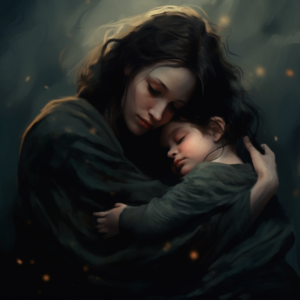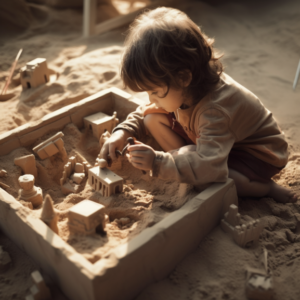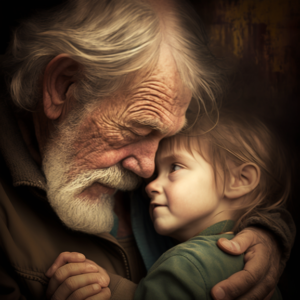Many people carry invisible scars. These are not just personal wounds, but deep, historical traumas that have affected entire communities for generations. From Native American lands to distant shores, the stories of historical trauma weave through the fabric of many cultures, often shaping lives in ways unseen and unheard.
One startling fact is that these collective scars do more than linger; they can also impact how we form relationships and interact with the world around us today. This blog aims to peel back the layers of history, revealing how past pains continue to influence present and future possibilities.
By understanding the roots of historical trauma, we’re taking a step towards healing and breaking a cycle that has held too many captive for too long.
Let’s start this journey together.
Key Takeaways
- Historical trauma occurs when a group experiences a deeply distressing event, and its effects are passed down through generations. This type of trauma shapes communities profoundly, affecting not just those directly involved but also their descendants.
- Healing from historical trauma requires acknowledging its presence and understanding its profound effects on the daily lives and mental health of native communities. Culturally informed approaches to healing are essential in this process. They respect the unique heritage and experiences of these groups by integrating traditional practices with modern therapeutic techniques.
- The subjective experience of trauma is deeply personal, impacting how individuals see the world around them and influencing relationships significantly. Addressing these lasting effects involves utilizing culturally sensitive therapeutic methods, promoting community support networks, raising awareness about historical trauma’s impacts through education programs, and fostering intergenerational dialogue for better understanding.
- Childhood trauma can leave a lasting impact on adult relationships by affecting emotional regulation and relationship dynamics. Recognizing the connection between past traumatic events and present behaviors is crucial in developing empathy for those affected.
- Communities play a vital role in addressing historical trauma by providing mutual support, culturally sensitive resources, educational initiatives targeted at breaking cycles of intergenerational pain while fostering resilience among current generations for future well-being.
Defining Historical Trauma
Historical trauma occurs when a group experiences a deeply distressing event, and the effects are transmitted across generations. This collective experience can manifest in various ways, impacting communities and individuals for years to come.
Understanding the impacts of collective trauma
Collective trauma shapes communities in profound ways. It stretches across generations, affecting not just those who directly experience a traumatic event but also their descendants.
This intergenerational trauma weaves a complex web of inherited pain and historical loss. Native American and Native Hawaiian communities often carry the weight of such traumas, where the effects ripple through time, altering traditions, beliefs, and social structures.
Victims of collective trauma frequently struggle with understanding the impacts it has on their personal and community life. Traumatic events from the past leave a legacy that can influence relationships, health, and well-being long after they occur.
Communities grappling with this type of trauma need to recognize its presence to begin healing. Addressing these deep-seated issues requires culturally-informed approaches that respect the unique experiences and resilience of those affected by historical traumas.
Examining its relevance for native communities
Native communities carry the weight of historical trauma, bearing scars from colonialism, forced relocation, and cultural suppression. This has left a deep impact on indigenous populations, manifesting in various forms such as intergenerational trauma, loss of language, and erosion of cultural identity.
It’s crucial to understand how these historical injustices continue to affect native peoples’ daily lives and mental health.
Healing from this trauma requires acknowledging its presence and understanding its profound effects on native American communities. Efforts towards recovery include promoting resilience within these communities through culturally informed approaches that respect their unique heritage and experiences.
Victim advocates play a key role in supporting native individuals by providing resources for healing while also educating the wider public about the importance of recognizing historical losses suffered by indigenous populations.
Uncovering the Hidden Trauma
Uncovering the Hidden Trauma reveals the enduring impacts of collective trauma on individuals. Exploring the subjective effects and long-term consequences offers insight into healing and reconciliation for those affected.
The subjective and lasting effects of trauma
Trauma shapes our lives in ways we often don’t see right away. People experience and process trauma differently, making its impact deeply personal and unique. For some, historical loss or childhood trauma can linger silently for years before showing signs.
This hidden pain affects how individuals view the world around them, influencing their actions and reactions.
The effects of this kind of trauma do not just fade away with time; they might even pass down through generations as intergenerational trauma. Individuals carry the weight of past traumatic events, which can alter their relationships and life choices significantly.
Understanding these subjective experiences is crucial in addressing the deep-seated pain caused by historical trauma and inherited pain, paving the way for genuine healing and resilience building among affected communities.
Healing and reconciliation through proper tools and support
The subjective and lasting effects of trauma can be addressed through healing and reconciliation with the help of proper tools and support. This involves:
- Utilizing culturally informed therapeutic approaches to ensure that healing is sensitive to the unique experiences of individuals and communities.
- Providing access to mental health professionals who are trained in trauma therapy and understand the complexities of historical trauma.

- Establishing support networks within communities to create safe spaces for sharing experiences and fostering a sense of belonging.
- Promoting educational programs that raise awareness about historical trauma, its impacts, and pathways to healing.
- Advocating for policies that address systemic issues contributing to ongoing trauma, such as poverty, discrimination, and lack of resources.
- Engaging in intergenerational dialogue to facilitate understanding between different generations affected by historical trauma.
- Encouraging the use of traditional healing practices alongside modern therapeutic modalities to honor cultural resilience and wisdom in the healing process.
- Collaborating with community leaders and organizations to develop comprehensive strategies for addressing historical trauma at a grassroots level.
- Empowering individuals and communities to reclaim their narratives and find strength in their shared history while working towards collective healing.
- Fostering resilience through initiatives that promote connection, empowerment, and self – determination as vital components of the healing journey from historical trauma.
The Lingering Effects of Childhood Trauma on Adult Relationships
Childhood trauma can have a lasting impact on individuals and how they navigate their adult relationships. Understanding the connection between past trauma and present behaviors is crucial in creating healthier relationships.
The lasting impact of childhood trauma on individuals and relationships
The lasting impact of childhood trauma can manifest in various ways, affecting an individual’s emotional regulation and relationship dynamics. Trauma experienced during formative years can lead to difficulties in establishing trust, communicating effectively, and managing emotions.
These challenges often carry into adulthood, influencing how individuals navigate their intimate relationships and interactions with others.
The lingering effects of childhood trauma on adult relationships are significant, shaping behaviors, attachment styles, and the ability to establish healthy boundaries. The impact of past experiences can deeply influence one’s capacity for intimacy and connection within relationships.
Exploring the connection between past trauma and present behaviors
Past trauma can significantly influence present behaviors, often shaping how individuals perceive and respond to the world around them. The lingering effects of historical or childhood trauma can manifest in various ways, impacting relationships with oneself and others.
Understanding the link between past trauma and present behaviors is crucial for fostering empathy and providing support for those affected by such experiences. By acknowledging this connection, communities can work towards creating a more compassionate and healing environment for individuals navigating the aftermath of traumatic events.
Next, we will delve into strategies for addressing and healing from historical trauma, offering culturally informed approaches that promote resilience at both individual and communal levels.
Ways to Address and Heal from Historical Trauma
Communities can address and heal from historical trauma through culturally informed approaches that honor the unique experiences of each group. It’s important to recognize the significance of addressing trauma at a community level in promoting healing and resilience for future generations.
Culturally informed approaches to healing
Culturally informed approaches to healing are vital for addressing historical trauma and promoting recovery. Respecting and integrating cultural beliefs, practices, and traditions into the healing process can significantly aid in addressing the deep wounds caused by historical trauma.
- Embracing traditional healing practices that have been passed down through generations offers a sense of identity, strength, and connection to heritage.
- Recognizing the significance of storytelling as a way to preserve history, pass on wisdom, and foster resilience within communities.
- Honoring sacred rituals and ceremonies as essential components of healing that bring individuals together in solidarity.
- Incorporating traditional arts such as music, dance, and crafts provides avenues for self-expression and catharsis.
- Acknowledging the importance of communal support systems and shared experiences in the healing journey.
- Valuing the guidance of respected elders who possess invaluable knowledge and insights into cultural healing methods.
- Creating safe spaces for open dialogue and intergenerational discussions to address historical trauma within native communities.
The importance of addressing trauma at a community level
Addressing trauma at a community level is crucial for promoting healing and resilience. By coming together, individuals can provide mutual support, understanding, and validation to those affected by historical trauma.
Creating safe spaces within communities allows for the sharing of experiences, which can help individuals feel less isolated and more empowered in their journey toward healing.
Communities play a vital role in providing culturally sensitive resources and interventions that cater to the unique needs of those affected by historical trauma. Through community-based initiatives, individuals can access various forms of support such as counseling, traditional healing practices, and educational programs aimed at breaking the cycle of intergenerational trauma.
Conclusion: Breaking the Cycle of Historical Trauma
Breaking the cycle of historical trauma involves acknowledging its impact and promoting healing for future generations. Building resilience and advocating for culturally informed approaches to addressing trauma are vital steps in breaking this cycle.
The importance of acknowledging and addressing historical trauma
Acknowledging and addressing historical trauma is crucial for healing and reconciliation. By recognizing the lasting impact of collective trauma, communities can work towards breaking the cycle of intergenerational pain.
It’s essential to provide culturally informed support and resources, creating a safe space for individuals to process inherited trauma. When communities come together to acknowledge historical trauma, they can build resilience and promote healing for future generations.
Addressing historical trauma at a community level is vital in creating an environment where individuals feel supported in their healing journey. Recognizing the impacts of past traumas allows for a deeper understanding of present behaviors and relationships affected by intergenerational pain.
Building resilience and promoting healing for future generations
Future generations can develop resilience through culturally informed approaches and community support. By acknowledging historical trauma, individuals can work towards healing and preventing the cycle of intergenerational pain.
Strengthening community ties and providing resources for healing is crucial in promoting resilience for future generations. Understanding the impacts of trauma and addressing it at a communal level fosters an environment conducive to healing from inherited pain.
The legacy of past trauma can be transformed into a narrative of strength and perseverance by providing adequate support systems for communities. Empowering individuals with tools to heal from historical trauma cultivates resilience that becomes intrinsic in shaping the well-being of future generations.
